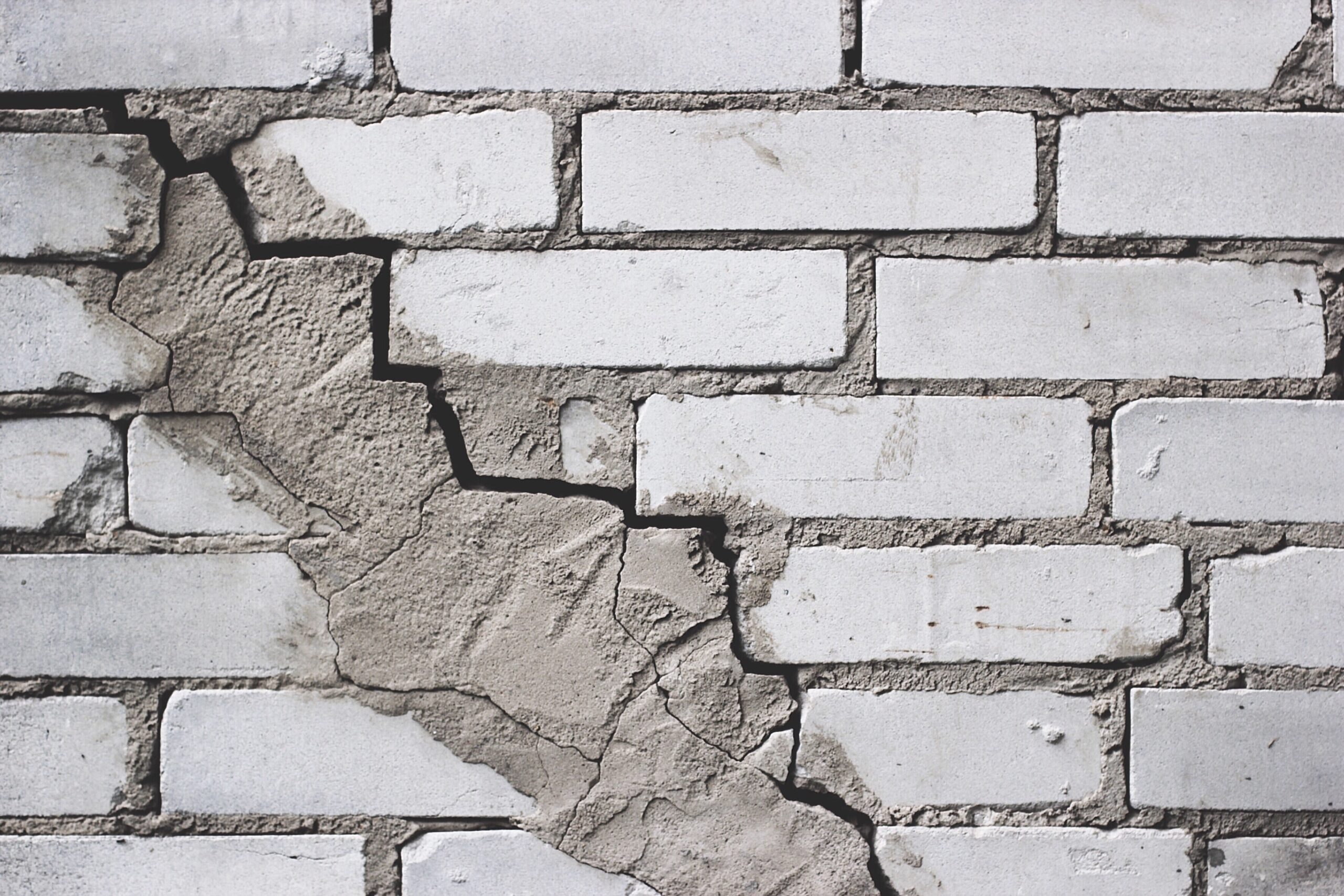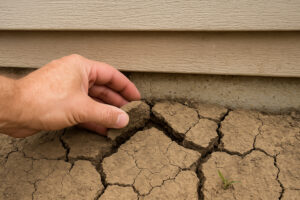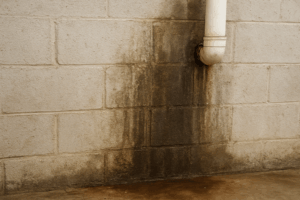Foundation cracks are a common but concerning issue for homeowners and property owners. While some cracks are purely cosmetic, others can indicate serious structural problems that may compromise the safety and stability of a building.
Ignoring them can lead to costly repairs, water damage, and even foundation failure.
In this article, you will learn:
- Common causes of foundation cracks.
- How to identify different types of cracks.
- When to repair and how to prevent future damage.
Understanding foundation cracks early can help you take the right steps to protect your property.
Let’s dive in.
What Causes Foundation Cracks?
Here is what causes foundation cracks.
Natural Settling and Soil Movement
As a house settles over time, small hairline cracks may develop in the concrete foundation.
This is a normal process, but if the cracks continue to widen, it could indicate foundation settlement issues. Expansive soils that shrink and swell with moisture changes can also create vertical cracks or diagonal foundation cracks in basement walls.
Soil movement is one of the five foundation concerns that homeowners should keep an eye on. Ignoring these shifts can lead to uneven floors, wall cracks, and serious structural problems.
Water Damage and Poor Drainage
Excess moisture is one of the biggest threats to a foundation. When water pools around the foundation, it exerts pressure on the foundation walls, which leads to horizontal cracks or stair-step cracks in block foundations.
Water seepage can also weaken the structure and even increase the risk of a cracked foundation.
Tree Roots and Vegetation Impact
Large trees planted too close to a home can cause trouble. Their roots absorb moisture from the soil, which leads to shrinkage and foundation settlement.
In some cases, roots can even push against the foundation wall and create a wall crack or cause cracks in basement floors.
Temperature Fluctuations and Frost Heaving
In colder climates, freeze-thaw cycles can cause cracks in your foundation.
When water in the soil freezes, it expands and lifts sections of the concrete foundation. When it thaws, the foundation sinks back down, leading to vertical or diagonal cracks over time.
On the flip side, extreme dryness can be just as damaging. The effects of dry soil can cause the ground beneath your home to shrink and lead to foundation settlement and cracks.
Poor Construction or Subpar Materials
If a home’s foundation was built with weak concrete or without proper reinforcement, foundation cracks are common.
Poor soil compaction before construction can also contribute to future foundation issues and cause structural foundation cracks that may require professional foundation repair.
Types of Foundation Cracks and Their Severity
Not all foundation cracks are created equal. Some are non-structural cracks that only affect appearance, while others signal serious foundation issues that could lead to costly foundation repair.
Here’s how to identify different types of foundation cracks and understand what they mean.
Hairline Cracks – Cosmetic or Early Warning Signs?
Hairline cracks are thin, surface-level fractures often caused by the concrete foundation curing process.
These cracks are usually harmless, but if they widen over time, they could indicate future foundation issues. Epoxy crack injection is a simple way to seal them before they become a serious foundation problem.
Vertical Cracks – Common but Sometimes Concerning
A vertical crack in the foundation is one of the most common types of cracks. These often occur due to foundation settling and are not necessarily a sign of structural failure.
However, if the crack widens or allows water to seep into the basement, it’s best to consider foundation crack repair.
Horizontal Cracks – Structural Risks and Red Flags
A horizontal crack across a foundation wall is a major concern. These cracks are often caused by soil pressure or hydrostatic water forces pushing against the foundation wall.
Left untreated, they can lead to a failing foundation.
Professional foundation repair solutions, such as wall anchors or carbon fiber reinforcements, are often necessary.
Diagonal Cracks – Soil Pressure and Shifting Problems
Diagonal foundation cracks are usually caused by uneven foundation settlement. They can indicate that one side of the home is sinking, which may require intervention from a foundation repair company.
These cracks often extend from the corners of basement foundation cracks and should be monitored closely.
Stair-Step Cracks – What They Mean for Block Foundations
Stair-step cracks typically appear in homes with block or brick foundations.
They follow mortar lines and are often a sign of shifting due to soil movement or excessive moisture.
If these cracks widen or show displacement, foundation crack repair is necessary to prevent a major foundation failure.
When to Worry – Signs You Need Immediate Repair
Here are the key warning signs.
Doors and Windows Sticking or Misaligned
If doors no longer close properly or windows feel jammed, this could be a sign of foundation settlement.
As a crack in the foundation worsens, the structure can shift, which causes alignment issues throughout the home.
Water Leakage and Basement Moisture Issues
Cracks in basement walls often allow water to seep into your home.
If you notice damp walls, mold growth, or pooling water, your foundation may need crack repair. Excess moisture can also lead to future foundation issues like rot or further cracking.
Expanding Cracks Over Time
A hairline crack might not seem serious at first, but if it continues to widen, it could indicate a growing structural foundation crack. Horizontal cracks in your basement or stair-step cracks in block walls are especially concerning.
Waiting too long to address these cracks can make things worse. There are ways delaying foundation repair can cost you money, from higher repair expenses to potential home devaluation. Fixing cracks early is always the cheaper option.
Uneven Floors or Gaps in Walls
A sinking or shifting foundation can cause floors to slope or develop gaps along walls. This is a major red flag that your home may have a serious foundation problem requiring professional foundation repair.
Cosmetic vs. Structural Cracks – How to Tell the Difference
Cosmetic cracks (such as small hairline cracks) are usually surface-level and don’t affect structural integrity.
Structural foundation cracks (like vertical or diagonal cracks) often point to movement or pressure on the foundation, requiring foundation crack repair.
Repair Options – DIY vs. Professional Fixes
Some foundation cracks can be repaired with simple DIY methods, while others require the expertise of a foundation repair company. The key is knowing when to handle it yourself and when to call a professional.
For small cracks, especially hairline cracks, epoxy crack injection or polyurethane sealants can prevent water seepage and further damage.
These products are relatively inexpensive and usually cost between $50 and $200 for materials. However, if a crack in the foundation continues to expand or water seeps through, a deeper issue may be at play.
Larger structural foundation cracks, like horizontal or diagonal cracks, often indicate foundation settlement or pressure from shifting soil. In these cases, professional solutions like underpinning, carbon fiber straps, or pier systems are necessary.
Costs vary, with minor foundation crack repair ranging from $500 to $2,500, while extensive foundation repair involving piers or excavation can exceed $10,000.
If you notice stair-step cracks, uneven floors, or foundation wall movement, consult a professional foundation repair specialist immediately. Waiting too long can turn a small issue into a serious foundation problem with much higher repair costs.
How to Prevent Foundation Cracks
Preventing foundation cracks starts with proactive home maintenance. One of the most effective steps is ensuring proper drainage by keeping gutters clean and directing water away from the foundation.
Poor drainage can lead to foundation issues like stair-step cracks and water seeping into the basement.
Regular inspections help catch minor problems before they escalate. Check for small cracks and seal them with epoxy crack injection if needed. Maintaining consistent moisture levels in the soil prevents foundation settlement—avoid extreme dryness or oversaturation.
Be mindful of tree placement, as aggressive roots can shift soil and cause a crack in the foundation. Keeping trees at a safe distance reduces the risk of foundation damage.
For a comprehensive understanding of foundation cracks, the International Association of Certified Home Inspectors offers a detailed guide.
Final Words
Foundation cracks can lead to serious structural issues if ignored. Knowing the types of foundation cracks, their causes, and when to seek foundation repair can save you time and money. Preventative steps like proper drainage and regular inspections help avoid costly damage.
If you have a crack in your foundation, Shield Foundation Repair offers expert solutions backed by 35+ years of experience and a lifetime warranty.
Contact Shield Foundation Repair today for a free consultation and protect your home before small cracks become major problems.




